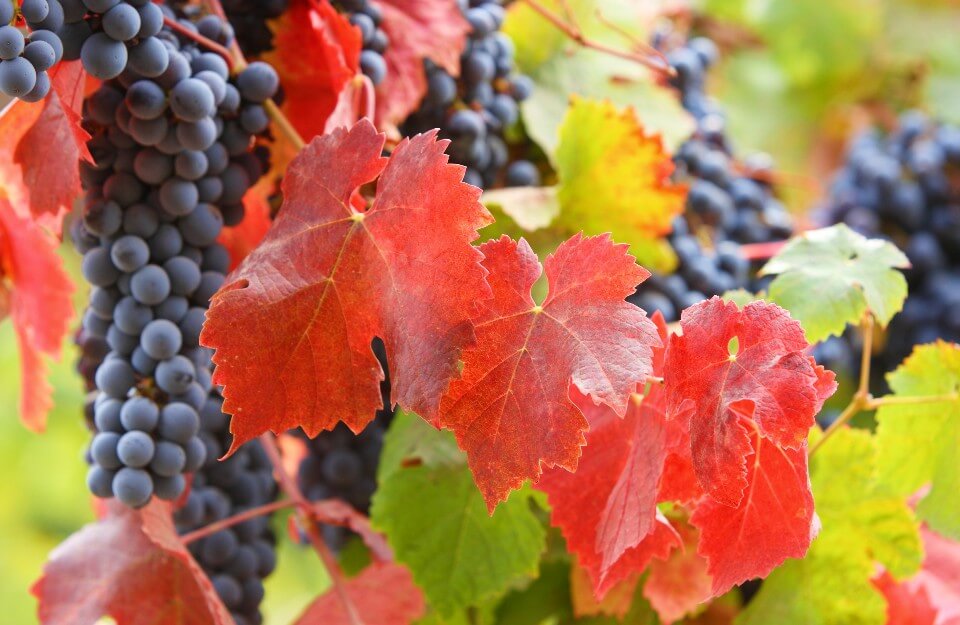
The history of the Carménère grape is special. Recognized as the most complex of all grapes when it comes to ripening, it suffered like no other grape variety from the effects of phylloxera, a plague that affected Europe between 1860 and 1870, especially France, where it originated. Such was the magnitude of the disaster that the Gauls, tired of the complexities of Carménère, decided to abandon its cultivation, which is why it was thought that Carménère had disappeared forever.
However, ten years earlier, some vines of this grape had been sent to Chile as a final destination. As a result of the crisis in Europe at that time, a large number of winemakers from the old continent emigrated to the South American country, giving a vigorous impulse to the emerging and already powerful Chilean wine industry.
However, despite this massive presence of highly trained personnel, Carménère was ignored. The reason? No one noticed its presence and it was planted in the company of Merlot vines. Merlot y Cabernetand for many years it was marketed as these varieties.
More than a century would pass before the secret of this grape was revealed, of which until then only a few vestiges were kept for academic studies at the University of Bordeaux, an area of France where it was produced on a large scale. Specifically, in 1991 the French ampelographer Claude Vallat pointed out that a certain Merlot produced in Chile was not such, but he could not determine which grape variety it really corresponded to.
"In 1992, in the wine guide we found that the Merlot we tasted blind had a greenish flavor, a taste of paprika, which is synonymous with immaturity and is the essential characteristic of Carménère. We looked for all the possible explanations, that it was the soil, that it was the climate", says Héctor Vergara, president of the Sommelier Association of Chile.
Two years later, Jean Michel Boursiquot, a disciple of Vallat, was finally able to determine that some varieties of Chilean Merlot really corresponded to the Carménère grape variety, which had already disappeared in Europe. Although the information generated certain problems in the industry, which were quickly overcome, the fact is that the possibility and business prospects from this new reality were enormous for the Chilean industry, in terms of the production of this particular grape variety.
But it was not an easy process. "The change was gradual because first the plantations were normally found together with the Merlot," says Vergara. "There was a whole process where we had to separate it first, then plant it and certify that it really was Carménère," adds the sommelier.
Current overview
The uncertainty that gripped the industry at that time quickly gave way to action. Today in the country there are more than 8 thousand hectares planted and recognized as Carménère. "Chile is the country that has identified itself with this variety as a differentiating element of its industry," says sommelier Ricardo Grellet. "If its growth statistics are maintained over the next decade, it could even surpass the 27,000 hectares planted with Cabernet Sauvignon," the expert explains.
All this commitment to quantity has been duly accompanied by the continuous improvement of the Carménère wines. "At the beginning, as we did not know how to work it well, nor did we know the best places for the development of the vine, our wines were a bit green," Vergara points out. "Now that flavor has been disappearing, but we should not push it to over-ripening because it loses its essence, which is precisely its greenish flavor, adds the sommelier.
Promising future

Vergara believes that the potential of Carménère is enormous, as Chile is the only country that produces it. "International markets are always on the lookout for new products and Carménère fulfills that. Although Cabernet Sauvignon is considered the number one grape variety, it is no less true that it is produced in more than 40 countries. Our Syrah is fantastic, but Australia has already taken those flags, while Malbec is associated with Argentina, in Carménère we are unique", he points out.
But this is not the only reason. Nor is it easy for competitors to appear, at least in the short term, for Chilean Carménère, since it costs a lot to produce. "In the climate of Europe it is almost impossible for it to mature because it needs many hours of sun, that is an advantage," explains the sommelier. "At first we sent wines that were quite green because we didn't know the whole vegetative cycle of the plant. That hurt us especially in the United States, but I think we are going to win that market, since the quality of the wines is much higher than ten years ago", he emphasizes.
For these reasons, he bets on Carménère as a spearhead for the opening of new markets for the Chilean industry. "If I sell wine, Carménère is always a novelty, it serves as a spearhead, if I want to open a market I can present Carménère and then present my portfolio of products. Chile is recognized in the international trade as the country of Carménère", concludes Vergara.






